Vicker's Amphibious Light Tank A4E3 L1E3
In 1939 Vickers designed an amphibious light tank based in their MkIV light tank to help the Army establish a bridgehead on the other side of a river when the normal crossing point had been blown up by the enemy. It would give covering fire for the engineers who were repairing the bridge or building an new pontoon bridge.
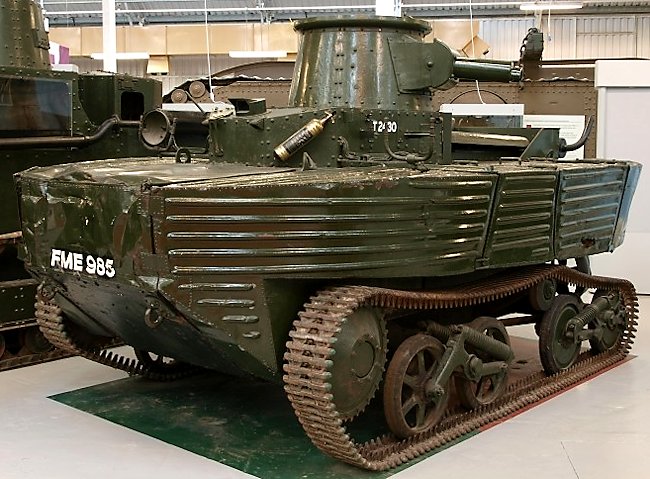
Vickers Amphibious Light Tank A4E3 (L1E3) at The Tank Museum Bovington England. Notice the steep sloping front to help the vehicle climb out of river banks.
Location
This Vicker's Amphibious Light Tank is on show at the Tank Museum, Linsay Road, Bovington, Dorset. The nearest train station is Wool Railway Station. You can walk the 2 miles to the Museum but there are not pavements along the country road and if you are travelling with children it can be dangerous. It takes 45 minutes by foot. There is an irregular bus service from Wool Station that will get you to the museum but they only come once an hour in the morning starting after 9.30.
The last bus back to the station from the Tank Museum is just after 13.45 which is really silly. There is no Sunday bus service. The easiest way to get to the museum from the train station is by taxi. They can be pre booked with Garrison Cars to meet you when your train arrives and pick you up for the return trip from outside the museum. Their phone number is 01929 463395
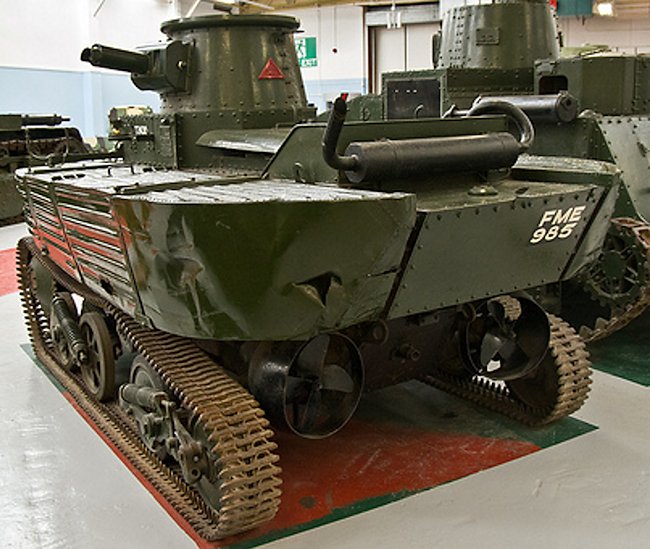
The Vickers Amphibious Light Tank A4E3 was powered by two propellers at the back of the vehicle when in the water. Earlier versions only had one propeller.
Specifications
The Vickers Light Tank A4E3 was officially called Tank Light Amphibious No.3 E1951.33. It was the third attempt at building a swimming tank. It was armed with a .303 Vickers machinegun fitted to a 360° turret. It was powered by a Meadows 6 cylinder, model EST, water cooled petrol engine that produced 89hp. It had a maximum road speed of 35 mph (56 km/h)and a maximum speed in the water of 5 mph (8 km/h). It had a maximum operational range of 120 miles (193 km). The crew of two were protected by armour that had a maximum thickness of only 11 mm. It weighed 4.3 tons and was 14'9" (4.5m) long, 7'6" (2.3m) wide and 6'10" (2.1 m) high.
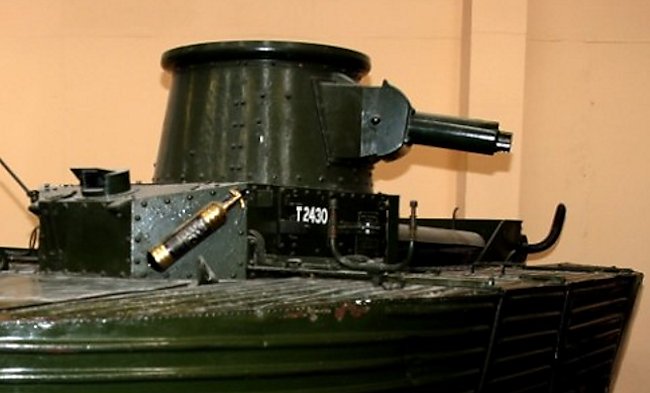
Vickers Amphibious Light Tank A4E3 (L1E3) was armed with a .303 Vickers machinegun fitted to a 360° turret
Vickers-Armstrong L1E3 Swimming Tank
The light tank L1E3, which was built in 1939, was produced specifically to British War Office requirements. Most of its mechanical features are identical to contemporary Vickers light tanks but the hull is surrounded by aluminum floats, filled with kapok, to provide buoyancy. Two marine propellers, shrouded in steering cowls, are fitted at the back but driven by shafts from the front sprockets. The tank was even equipped with a small boat anchor at one time. When in the water, the two tank propellers were driven by two smaller engines mounted in the back, driven by the main engine.
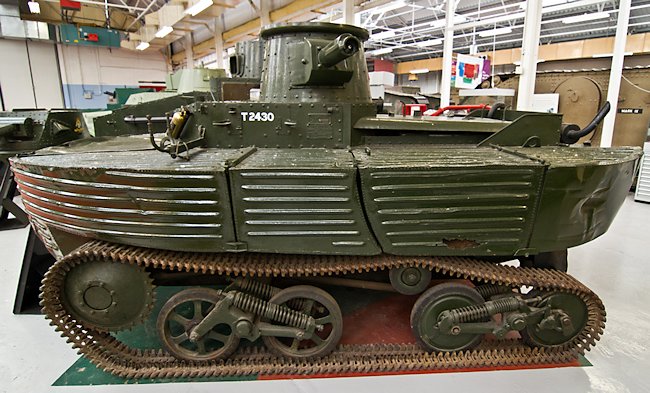
A modular approach was taken when designing the floats. Each side had four aluminum box like compartments.
An amphibious tank's greatest problem is getting out of the water, especially on muddy river banks. The front of the vehicle's hull armour was very steely angled to assist in overcoming steep river banks. A modular approach was taken when designing the floats. Each side had four aluminum box like compartments. The thinking was that if one got damaged by enemy fire and started to take in water the other three floats would not be effected and still be able to keep the tank bobbing along in the water if now at a slight angle. The driver sat in the front of the tank in the middle and his head was protected by an armoured box that jutted above the floats. It was fitted with a periscope so he could still see when his hatch was buttoned down in battlefield situations.
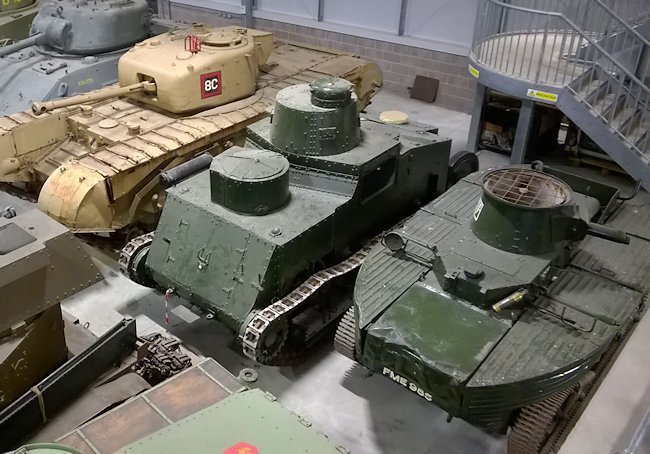
Vickers Amphibious Light Tank A4E3 (L1E3) in the Tank Museum Vehicle Conservation Hall at Bovington
This amphibious tank design was revolutionary at the time. They had turned a tank into a boat. Because of the very nature of a tank, being very heavy because of the protective armour, they do not do very well in water. The running track was the standard Vickers Light tank MkIV configuration. This consisted of two Hortsmann spring suspension (in quad scissors) front drive sprockets and no idlers. Vickers had decided to abandon the guide wheels and supporting rollers of previous versions of their light tank. Such a move gave several advantages. It reduced the length of the tank, increased seat track mover and facilitated construction of the chassis as a whole. The only serious shortcoming observed later was somewhat poorer mobility, compared with earlier versions
This Vickers design was never adopted. The tank was tested briefly at the start of the war, spent the next four or five years in reserve and was then subjected to more tests after the war, by which time it was completely out of date. Vickers-Armstrongs built two earlier amphibious light tanks between the wars: the L1E1 and the L1E2. They enjoyed some modest export success, notably in Russia where it was copied
For some time the Vickers Amphibious Light Tank A4E3 (L1E3) at The Tank Museum Bovington had been exhibited in the 'Inter War Hall' but recently it has been moved to the large Vehicle Conservation hall where it is awaiting its turn for a make-over tank overhaul.
World War Two Books

